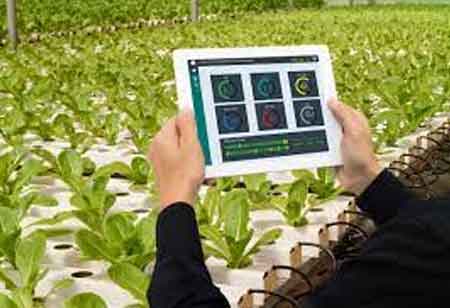Thank you for Subscribing to Agri Business Review Weekly Brief
The Impact of Regenerative Agriculture on Soil Health
APAC faces severe soil degradation. Regenerative agriculture offers solutions by restoring soil health, enhancing biodiversity, and reducing chemical use.

By
Agri Business Review | Wednesday, March 05, 2025
Stay ahead of the industry with exclusive feature stories on the top companies, expert insights and the latest news delivered straight to your inbox. Subscribe today.
APAC faces severe soil degradation. Regenerative agriculture offers solutions by restoring soil health, enhancing biodiversity, and reducing chemical use. Adoption requires collaboration, incentives, and consumer awareness for long-term sustainability.
FREMONT, CA: Regenerative agriculture is a transformative approach to farming that focuses on restoring and enhancing soil biodiversity, fertility, and overall health. In recent years, the Asia-Pacific (APAC) region has seen a growing trend toward adopting regenerative practices, inspired partly by the pressing challenges of climate change and unsustainable agricultural methods. This shift aims to improve yields and ecosystem resilience and address the long-term degradation of soil health.
The State of Soil Health in APAC
Soil degradation remains a critical challenge across the region, with widespread issues such as erosion, salinization, and nutrient depletion threatening agricultural productivity. Countries like China, India, and Indonesia have experienced significant declines in soil fertility, often driven by unsustainable practices, including monocropping, excessive chemical use, and inadequate water management. In China, soil pollution and erosion have led to substantial productivity losses, while India faces severe desertification and nutrient depletion across more than 30% of its land. Meanwhile, deforestation-driven agricultural expansion in Southeast Asia has rendered vast areas vulnerable to erosion. These pressing concerns highlight the need for sustainable farming practices to restore soil health and ensure long-term food security.
The Role of Regenerative Agriculture in APAC
Regenerative agriculture presents a viable solution to address soil degradation while enhancing productivity and environmental resilience. By incorporating organic compost and diverse cropping techniques, regenerative practices replenish essential nutrients, sustainably revitalizing soil health. Additionally, these methods contribute to carbon sequestration, as healthier soils absorb and store atmospheric CO₂, which is crucial in mitigating climate change. Improved soil structure enhances water retention, reducing irrigation demands—an especially vital benefit for drought-prone regions like Australia and South Asia. Furthermore, encouraging biodiversity through crop rotation and natural grazing patterns helps restore ecological balance, fostering a more resilient agricultural landscape. From an economic perspective, regenerative farming reduces reliance on costly chemical fertilizers and pesticides, offering long-term financial benefits for farmers. As APAC grapples with the challenges of soil degradation, adopting regenerative agriculture is an environmental necessity and an economically sustainable strategy for the future.
The widespread adoption of regenerative practices in the APAC region hinges on the collaborative efforts of governments, NGOs, and the private sector. Key initiatives to drive this transition include financial incentives and subsidies that support the shift to sustainable systems, equipping farmers with the necessary knowledge through specialized training programs, and fostering research and innovation to enhance large-scale implementation. Additionally, aligning market demand with regenerative agriculture by promoting consumer awareness and incentivizing the purchase of sustainable goods will ensure long-term success.
Regenerative agriculture represents a path forward for sustainable and productive farming in the APAC region. With its focus on restoring soil health, reducing carbon emissions, and enhancing biodiversity, it holds the key to addressing some of the most pressing environmental and agricultural crises. Scaling this approach will require collective action, but the benefits promise a transformative impact for both people and the planet.





